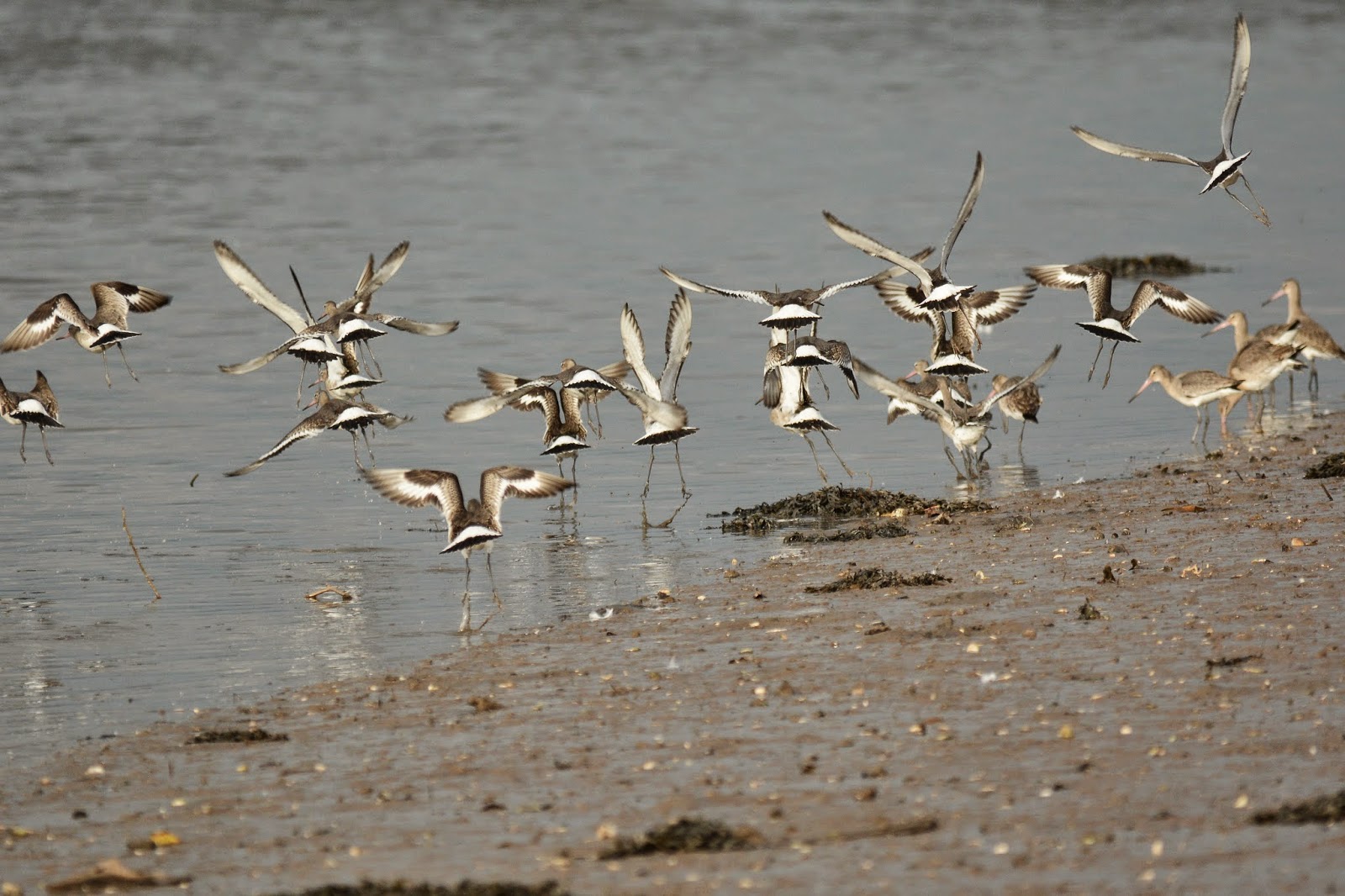 |
| Black-tailed Godwits ( Copyright T D Wright ) |
When I'm birding around the Axe estuary many members of the public ask me the same questions. I thought it might be a good idea to address some of them on the blog. Hope I'm not coming across as a self-appointed 'expert' but I only try my best to answer the question that's been asked. That's what I was taught to do at school anyway. So, here goes...
 |
| Black-tailed Godwits ( Copyright T D Wright ) |
Here you can see a multitude of Blackwits. Some standing, some flying. In flight, the clearly defined markings separate Blackwit from Barwit. These birds show a gleaming white underwing, a broad white wing-bar and a bright,white base to the tail. Contrast this with the Jet-Black broad terminal band across the tail and the remainder of the upperwing which, although brown, often
looks almost black when not in bright sunlight as in the pictures above. The result is that a flock of Blackwits will often look very black-and-white, a bit like a flying Chessboard or herd of Zebras. Your Barwit, on the other hand, looks plain and streaky brown all over, quite like a small Curlew but with a recurved not decurved bill.
 |
| Blackwit, Barwit and Curlew ( Copyright T D Wright ) |
Without flight views, Barwit can still be separated from Blackwit by a combination of leg length and plumage differences. As far as leg length goes, Barwit is shorter legged overall, plus it generally shows a shorter Tibia ( the bit above the 'knee'( which is actually the ankle! )). However, some Blackwits have shorter legs than others, so it's always necessary to follow up on this feature by checking the plumage differences...
 |
| Barwit ( Copyright T D Wright ) |
 |
| Barwit ( Copyright T D Wright ) |
 |
| Barwit ( Copyright T D Wright ) |
 |
| Barwit and 1/2 a Blackwit ( Copyright T D Wright ) |
 |
| Barwit & Blackwit ( Copyright T D Wright ) |
The above image is particularly helpful, as it clearly shows the upperparts on both species. Note how streaky and variegated the mantle and scapular feathers are on the Barwit. By contrast, look how plain (or 'concolourous' if you prefer!) the mantle and scaps of the Blackwit are. Also, note how the pale supercilium ( that's the stripe over the eye ) stands out more on the Barwit. That's not just the angle of the Sun. It's because the crown especially, and to some extent the lores and ear-coverts, are darker on Barwit - which makes the pale super more contrasting. This is often the first feature which draws my attention to a Barwit when scoping through the Axe Blackwit flock.
 |
| Blackwit, Barwit & Curlew ( Copyright T D Wright ) |
 |
| Blackwit, Barwit & Curlew ( Copyright T D Wright ) |
 |
| Barwit ( Copyright TD Wright ) |
I think I'll leave it there for now. Breeding plumage might be something to add in the future. If I feel I've forgotten anything I'll update this post if and when, as they say. Hope this helps those of you who asked for it.











No comments:
Post a Comment